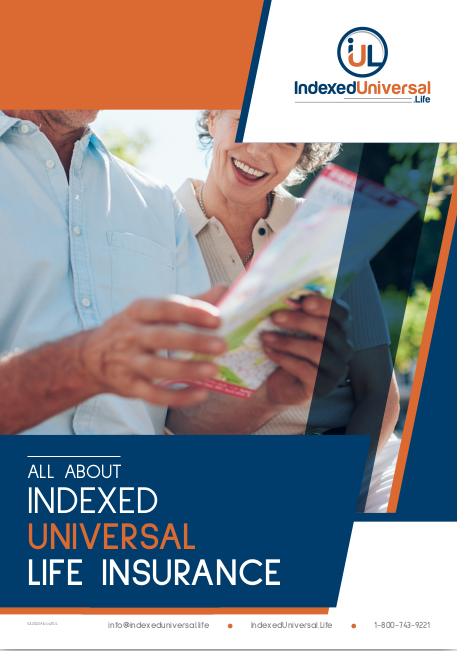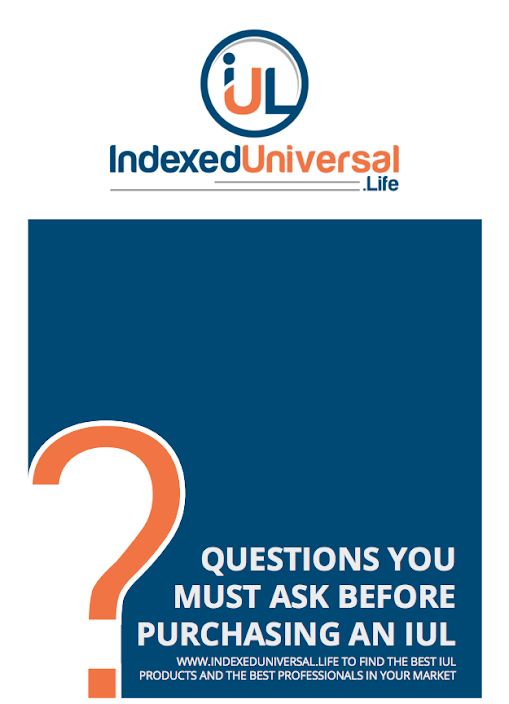IUL Illustrations
The Index Universal Life illustrations provide you with a detailed description of the guarantees provided by an IUL policy. In-Force IUL Illustrations provide owners of an IUL policy a way of reviewing their current IUL policy’s progress and performance.
Different life insurance companies offer many IUL policies, and prospective clients may sometimes find it difficult to determine the best IUL policy. Because of this, illustrations are used to demonstrate why clients should consider a certain IUL policy over another.
Even though illustrations accompany the purchase of IUL policies, industry analysts argue that they have led to deep divisions in the life insurance industry. This division is caused by the tendency of the illustrations to draw differences between insurance companies that can be very divisive, and sometimes inaccurate.
The National Association of Insurance Commissioners (NAIC) has created guidelines to regulate IUL illustrations to ensure clients have the most accurate information available when deciding which policy to purchase. The NAIC created actuarial guidelines to address the ever-growing differences and certain unrealistic projections of growth. What is referred to as AG49, are the actuarial guidelines governing IUL illustrations.
Is IUL The Right Choice For You?
How IUL works
For many prospective buyers, the best IUL policy has the highest cash value returns at the end of the year. While it is true that IUL policies guarantee policyholders some return on their investment regardless of how the market performs, it is important to point out that the insurance company sets the interest cap and limits the amount of return you can get from your investment.
Some people argue that IUL investments are better than investing in the stock market. However, there is no one-size-fits-all when it comes to investing, and using IUL as an investment may be perfect for one consumer and the wrong thing for another. This is why it is always highly recommended that prospective buyers work only with the highest-rated IUL expert they can find.
The Major Components of an IUL Illustration
An IUL illustration must include some critical components to prove to a prospective client that it is the best in the market. Before investing in any IUL, it is important to know the benefits of the IUL you are considering, what you are likely to receive in returns, and of course, what happens if the market performs poorly or the internal costs increase for the product you own. There are three important aspects of an IUL illustration:
- 1. Guaranteed Returns: Your IUL illustration should demonstrate that the policy has some guaranteed returns. In fact, the guarantees are the reasons why people typically invest in IUL policies. This component indicates the minimum return that a client should expect from the IUL company. These guarantees are also what the client should pay the closest attention to. Focusing on the highest returns generated can provide for a false sense of security. Indexed Universal Life Insurance is a great product, especially when it is purchased by a consumer who understands all of the possible scenarios that could exist in the future - not just the rosiest.
- 2. Possible Returns: It is also important for the consumer to read the illustration and understand the possible returns at different crediting rates. Your IUL expert can show you how to identify this within the Illustration. This component helps prospective clients know the estimated amounts of money they are likely to receive at different rates.
- 3. Crediting Rate and Insurance Cost: Prospective clients need to know their insurance costs to determine whether the policy is viable or not. Although the best IUL companies will likely meet or beat your expectations, most IUL companies reserve the right to change insurance costs at will, and this might have an impact on returns. Also, a prospective client must understand whether the IUL company has the right to lower the interest cap. This section should be a key part of any complete IUL illustration.
Major Changes in IUL Illustrations
There have always been issues when it comes to the right crediting rate for IUL policies. In fact, most IUL agents cannot provide a conclusive answer on what, in fact, the proper IUL crediting rate is. However, the question AG49 addressed relates to what rates of return are reasonable to include in an illustration. IUL experts have long held that full disclosure and understanding by the client are absolutely necessary. Clients that work with IUL experts are likely to receive a far better explanation of the product’s income and growth components, therefore, more likely to make the best decisions about whether or not to use an IUL in their retirement income plan, and if so, which IUL policy is best for them.
According to the National Association of Insurance Commissioners (NAIC), the perception is that crediting rates of between 6.5% and 8.25% can support an IUL policy. The NAIC’s Life Actuarial Task Force revealed in its 2015 review that there is a need to limit illustratable crediting rates to bring some clarity in IUL illustrations.
The American Council of Life Insurers (ACLI) has also contributed to the ever-growing debate about IUL illustrations. ACLI agrees with the proposal to regulate IUL illustrations and insists that all IUL illustrations conform to the actuarial guidelines and meet the specified goals. For instance, similar IUL products should not show significant differences in determining their illustrated rates.
There is an increasing need for consistency to ensure ongoing trust in IUL illustrations. The actuarial guidelines introduced in 2015 have created a decrease in maximum illustrated rates for IUL policies and that is a very good outcome. According to a survey conducted by Susan J. Saip and Carl A. Friedrich of Millman Financial Risk Management, the average illustrated rate was 6.69 percent in the first nine months after the new guidelines.
Insurers and IUL agents apply a wide range of practices when illustrating in-force policies. Some methods include; increasing spreads, adjusting caps, creating new illustration scales, supporting in-force block with a surplus, illustrating guarantees, and discontinuing other product illustrations.
In conclusion, there is a need for uniform illustration standards to avoid the inconsistencies that are typically seen when illustrating similar IUL products. National Association of Insurance Commissioners (NAIC) introduced new actuarial guidelines for illustration of IUL products in 2015 that have been well received by the American Council of Life Insurers (ACLI) and IUL experts alike. Apart from bringing to an end the inconsistencies caused by prior IUL illustrations, the new guidelines have made it more clear than ever the need for consumers to only use IUL Experts when purchasing an Indexed Universal Life Insurance product. If you are considering an IUL policy, you should identify the highest-rated financial professional and IUL expert in your market and ask them to compare whatever IUL illustration you may have received against a solution of their design.
Search The Best-Rated IUL Experts. Seek Out The Best Advice.
IUL is a Great Potential Solution - The Best Results Require
The Best Advice.

Complete the
Information to
download
We respect your privacy and will never SPAM you.
Thank You! Your eBook has
been emailed to you.
To get the most out of the resources available to you, please enter your Zip Code and connect with the highest-rated IUL Experts. The Best Advice Creates The Best Results.
Thank You for your interest
in our content!
To get the most out of the resources available to you, please enter your Zipcode and connect with the highest-rated IUL Experts. The Best Advice Creates The Best Results.

